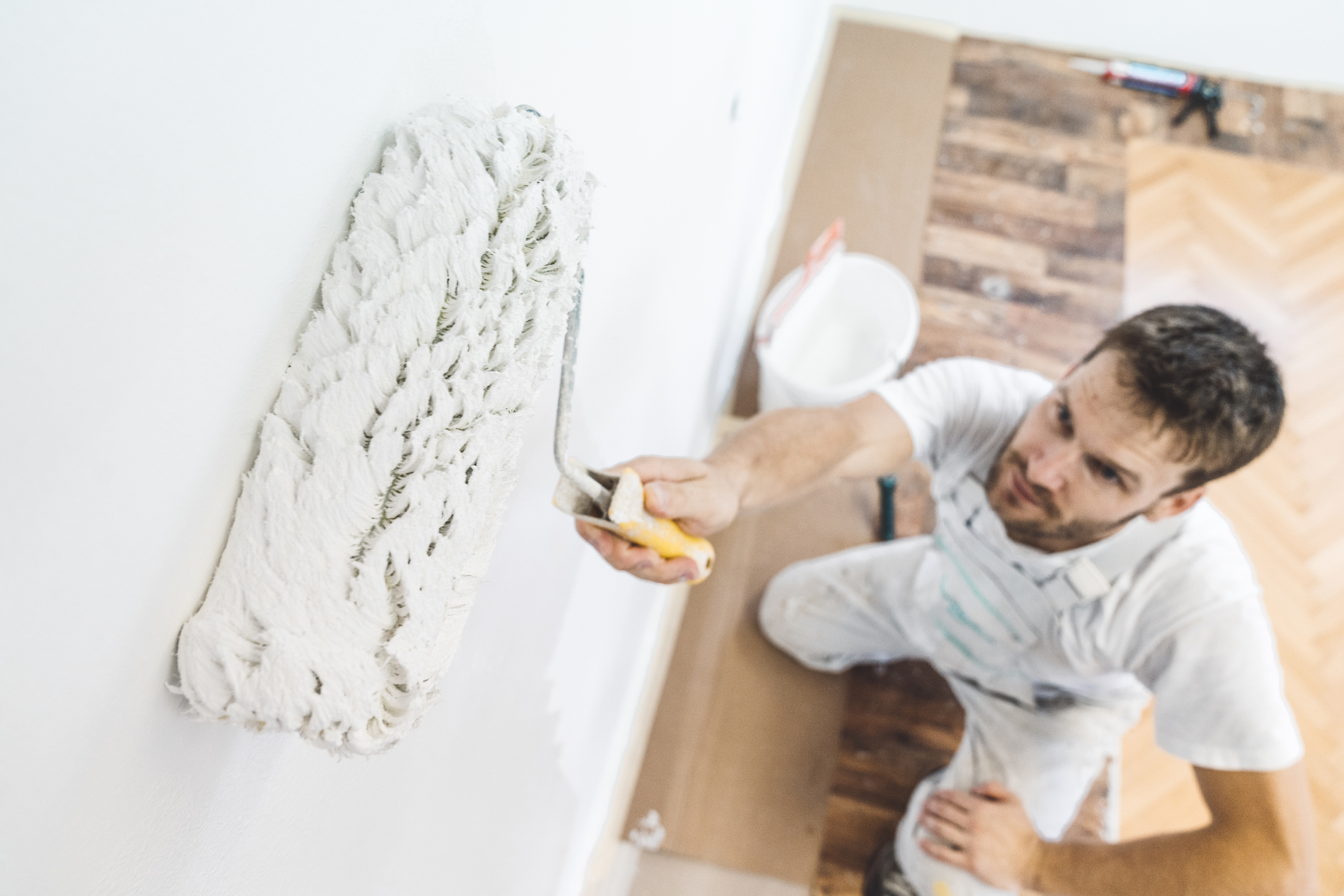Painters and Decorators: How to Find the Right One
Painters and decorators are crucial to the flawless finish of your project, but are easily overlooked. Here's how to avoid falling into that pitfall

Painters and decorators are often forgotten about or even dismissed until it’s nearly the end of the job. In the unofficial hierarchy of the building site, painters and decorators are often considered close to the bottom, and their levels of remuneration reflect this fact.
Many self-builders choose to undertake this trade themselves, and some make a pretty good fist of it. Others realise quickly (although sometimes too late) that this is a complex and important trade that can make or break the final finish and enjoyment of a home.
When Do You Need a Painter and Decorator?
You might not need the painters and decorators until very close to the end of the job. But it’s equally possible, if you’re installing timber fascias, soffits or bargeboards which need painting, that you’re going to need them as the roof goes on, before any guttering or downpipes are fitted.
Internal timber should be primed and undercoated on the rear side before it’s fitted and, if the decorator is early on site, space should be set aside for skirtings, architraves, window boards and the like to be laid out and treated. External joinery should also be treated and decorated on what will be the hidden or built-in faces.
What Do You Need to Provide?
In almost all respects, painting and decorating is a labour-only trade. Therefore, it will usually be your job to provide the majority of the equipment and materials your decorator needs, including brushes, abrasives, fillers and all of the paints, stains, preservatives and cleaners they require.
Most, but not all, painters and decorators will possess their own hard tools such as scrapers and pallet knives. It’s also imperative that you provide them with the correct environment for their work. A building site is a very messy place, with dust, dirt, detritus and off-cuts all over the place. Asking a decorator to work among all of that is a recipe for trouble.
Very few trades take any responsibility for clearing up the mess they make, and there isn’t a specific trade for clearing up on site. When there is a main contractor the job can fall under general labour, but where direct labour is employed cleaning can fall between the cracks. On a self build site it’s often the self-builder who ends up taking on this responsibility.
Bring your dream home to life with expert advice, how to guides and design inspiration. Sign up for our newsletter and get two free tickets to a Homebuilding & Renovating Show near you.
Before a painter and decorator starts work, the whole house should be cleaned from top to bottom. It’s no good just clearing one room at a time; dust will migrate from room to room. Even after you’ve cleaned, other trades will make more mess and you’ll have to clean it up again. The decorators themselves will make clouds of dust as they rub things down and that’ll have to be cleaned up before they start to decorate the very surfaces they’ve prepared.
It’s an ongoing task. Dust sheets can be put down, but they are all but useless unless they are regularly taken out, shaken and then re-laid.
(MORE: Could you project manage your own build project?)
Where to Find a Good Painter and Decorator
Just as with every other trade, the best way to choose a decorator is to follow the recommendation of another self builder. The usual websites will be full of names, and most local papers and freebie publications will have advertisements from painters and decorators. However you find your painter and decorator, it won’t negate the need to see their previous work and talk to their previous clients.
Snagging
It may not have been in your lexicon previously, but ‘snagging’, which means ‘putting things right’, is a word that you’ll get to know quite intimately during the course of any self build. And decorating is the trade where it is most applicable.
A plumber, a carpenter or an electrician, any trade in fact, will need to snag. And when they do, they’ll make more mess, even undoing work that has already been done. That’ll mean holes, rough patches and repairs jobs, all of which will have to be made good again.
Which trade is responsible for this? It’s the painters and decorators. They tidy up the work of others, so they have to get on with most of the major trades and accept their role as the trade that follows on and makes good.
If you, as the self-builder, have chosen to undertake this trade, then this is the responsibility you are taking on.
(MORE: 15 Ways to Stay on Budget)

Material Choices
For the first decoration of a home, it’s recommended that walls are decorated with trade emulsion that lets moisture out of the structure. This is fairly economical stuff, so long as you stick to off-the-shelf colours. If you start to mix your own colours, the prices will double or even treble, and the same applies to gloss paints or finishes.
Newly plastered walls should be left to dry out and then painted with a mist coat (paint diluted with water) or a dedicated ‘bare plaster’ paint, before top coats of emulsion are applied. Be careful about mixing natural timber with products such as MDF. The former will shrink while the latter remains stable, so if they adjoin cracks will appear.
All buildings dry out and cracks will become apparent after they have been occupied for six months or so. Using the correct scrims when plastering and the correct caulks when decorating will help to limit the scope of the inevitable redecoration, but there’s no way to prevent this happening altogether.
How Much Should You Pay a Painter and Decorator?
A painter and decorator will usually expect to get between £130 and £150 per day, making them one of the cheapest trades, obviously subject to regional variation. The average time taken, including the bits and pieces early on in the job, is around four to five weeks and, once again, the mark of a good tradesperson is their ability to amortise their expected time taken for the job and express it as a lump sum price.
What You Should Look For in a Good Painter and Decorator?
Decorating is never just a matter of covering things with paint. There is an old saying about the five ‘P’s: ‘Proper preparation prevents poor performance’. This adage applies, full throttle, to the decorator. Use this handy checklist to ensure you’re working with a professional.
- Study your prospective choice of operator to see how much trouble they take to prepare
- Weed out anybody who proceeds straight to decorating a wall without rubbing it down and filling in any blemishes first
- Make sure that timber and joinery is rubbed down, prepared and treated before it is decorated, and that its back faces are also dealt with
- A tidy decorator won’t produce a sloppy finish. A decorator who takes care of their tools and bothers to cover things up is the one to choose
- Look for a decorator who uses suitable tape to prevent damage to abutting surfaces. This is an obvious outward sign of care and attention
- A decorator who shows an understanding of their role in snagging the work of others is one to consider seriously.
David is one of the UK's leading self build and plotfinding experts, and a serial self builder who has been building homes for 50 years. The author of Building Your Own Home, now in its 18th edition, and the Homes Plans Book, David spent decades as a speaker and expert at self build exhibitions such as the Homebuilding & Renovating Show. He also helped countless budding self builders find their dream building plots as part of his long-running Plotfinder Challenge series in Homebuilding & Renovating magazine. He has self built 14 homes.

